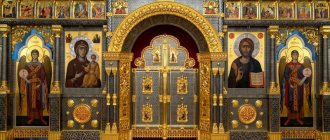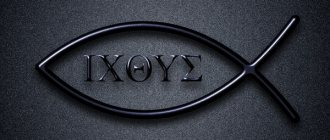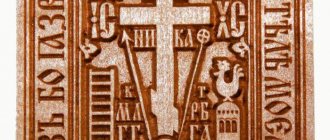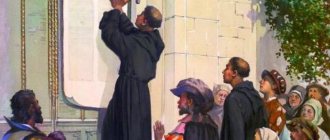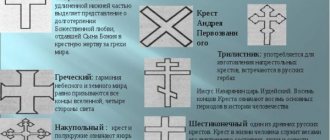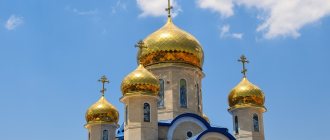What are Christian symbols for?
A symbol is a common variable image that denotes a multi-valued image, concept, idea or phenomenon. A sign is a generally accepted image to indicate a specific meaning. There are a large number of different symbols in Christianity. The first believers used Christian symbols during times of persecution, when images of Jesus Christ were prohibited. For example, similar symbols were found in Roman catacombs. In ancient times they served as a refuge for persecuted Christians.
The vine is one of the Christian symbols
Christian symbols serve as an outward, visible expression of faith. The infinite, incomprehensible God and His attributes cannot be fully expressed in words or images. Therefore, Christians resort to various images and symbols. In ancient times, this was especially appropriate for introducing simple, unprepared people to the basics of Christian doctrine. Many symbols of Orthodoxy are depicted on icons. For example, the Holy Spirit is represented as a dove in icons of the Epiphany.
Image of Chrisma
The earliest image of Chrisma is also similar to the pagan symbols that were the signs of Assyrian warriors. The wheel with six spokes can be compared to the wheel of God Jupiter. You can see a cross on the product, which indicates that the product can be used as a talisman. Considering the duality of the amulet, we can say that such jewelry is suitable for people who need protection from aggression. Six-rayed stars called Gromovnik connect a person with the Divine. This sign was a talisman and was depicted on military shields.
Christian symbols - semantic meaning
Cross
The cross is the main symbol of Christianity. Jesus Christ was crucified on the cross, which in those days was a common instrument of execution. He reminds us of the Lord's great sacrifice to atone for our sins. About His boundless love and mercy for fallen man. The cross is the sacred banner of the Savior's victory over death and sin. This is a symbol of the triumph of love and eternal life. Many early Christians were also crucified for their faith.
“On the Cross a sacrifice was made, and where there is a sacrifice, there is remission of sins, there is reconciliation with the Lord, there is celebration and joy” (St. John Chrysostom - Complete Collection of Creations. Volume 2).
The most famous Christian prayer gesture, the sign of the cross, is based on the symbol of the cross. It expresses the confession of faith in the Holy Trinity, love for God and trust in Him. Also, every Christian is given a personal cross at Baptism. By worshiping the cross, we honor the Lord himself. This symbol has beneficial powers and is an effective weapon against evil spirits.
At first, the image of the cross was not used by Christians; it was replaced by other sacred images. However, over time, this symbol became widespread. Largely thanks to the miraculous discovery of the Holy Cross by the Holy Queen Helen. That is, the very cross on which the Savior was crucified. The discovery took place in Jerusalem in the 4th century.
Ichthys
Before the mass veneration of the cross, ichthys was one of the most common symbols of Christianity. It represents a monogram of the name of Jesus Christ. Ichthys also indicates His Divine origin and mission: “Jesus Christ the Son of God the Savior.” Thus, the symbol contains the foundations of Christian doctrine.
Allegorically, ichthys is often depicted as a fish. Such Christian symbolism takes its roots in the narrative of the New Testament. It is known that many of the apostles were fishermen. Christ calls them “fishers of men” (Matthew 4:19). That is, fishermen in the spiritual sense who will catch people in the net of the Kingdom of Heaven (Matthew 13:47). The symbol of the fish also refers to the New Testament story of feeding the people in the desert with bread and fish (Mark 6:34-44).
The early Christian theologian Tertullian wrote at the beginning of the third century:
“We are little fish, led by our ikhthus, we are born in water and can only be saved by staying in water” (“Theology of the Icon of the Orthodox Church”).
Alpha and Omega
The symbol is a combination of the first and last letters of the classical Greek alphabet. God is called Alpha and Omega in the last book of the Bible - “The Revelation of John the Evangelist” (Rev. 22:12-13). This name symbolizes the infinity of the Almighty and indicates that He is the beginning and the end of everything that exists.
Saint Gregory the Theologian wrote:
“By You alone everything abides, everything strives towards You, You are <The Beginning> and the end of everything” (“Creations”).
The equivalents of the first letters of the Greek alphabet are the words “first” and “last,” which are used to describe God in the Old Testament (Is. 44:6). The Prophet Isaiah thus pointed to the absoluteness and omnipotence of the Almighty.
The Alpha and Omega symbol is used in the iconography of Jesus Christ. These letters are usually placed next to the Savior's halo or directly inside it.
Chrism is the symbol of the Orthodox Church, what does it mean?
Have you noticed cars with a sticker in the shape of a fish? Do you think these are avid fishermen? Nothing like this! Fish is one of the most ancient Christian symbols. In our time, unfortunately, the fish has been almost completely “monopolized” by Protestants of various stripes. But Christian symbols do not end with fish alone, many of which are now undeservedly forgotten.
Why did the first Christians need these symbols? The first centuries of the history of the Church are centuries of persecution, nightly meetings in the catacombs and a certain conspiracy. The first Christians needed to identify their own and others, and the first images were symbolic in nature and were understandable only to initiates.
Let's start with the already mentioned fish. "Fish" in Greek sounds like "Ίχθύς". Christians began to use this word as a monogram of the Savior's name.
That is, it turns out to be a whole small confession of faith! “We believe that Jesus Christ is the Son of God and the Savior” - this is how this ancient symbol can be deciphered.
Often fish were also depicted with bread, which recalled the most important sacrament of the Church - the Eucharist - and the “bread of life”: “I am the bread of life” (John 6:48).
Chrism
Another symbol that is somewhat more known and is even found on vestments is the chrisma. Chrism is a monogram with the letters X and P (that is, Christ), as well as the Greek letters alpha and omega. With these letters everything is a little more complicated. “ I am Alpha and Omega, the beginning and the end, says the Lord, who is, and who was, and who is to come, the Almighty
"(Rev. 1:8).
“ The words Alpha and Omega signify Christ as God, who contains everything, without beginning and without end: He who is before and without end, co-essential with the Father and, therefore, having to reward everyone for their deeds
,” is how Saint Andrew interprets this passage from Scripture Caesarea.
Chrism was used in the military standard of Emperor Constantine the Great and is generally more widely known to the Christian world.
Lamb
Another symbol of Christ is the lamb. There is hardly any need to explain much here. “Behold the Lamb of God, who takes away the sin of the world” (John 1:29) - it is said in the Gospel of John about Jesus Christ. In general, early Christian art was very fond of images of Christ as a lamb, and it was very, very widespread.
Ship and anchor
The ship symbolizes the Church, and the anchor is a symbolic image of the cross. Everything is clear here: the Church is in the stormy sea of life, and the anchor holds it.
Pelican and rooster
But these are much less well-known symbols.
Ancient legends claimed that the pelican is a bird that feeds children with its flesh. Therefore, her images were used by the first Christians as a symbol of Christ, who shed His Blood for the salvation of mankind. Remember: “ Jesus took bread, blessed it, broke it, and gave it to the disciples, saying: Take, eat: this is My Body. And taking the cup and giving thanks, he gave it to them and said, “Drink from it, all of you, for this is My Blood of the New Testament, which is shed for many for the remission of sins.”
"(Matthew 26:26).
The image of the rooster is an obvious allegory. On the one hand, this is a reminder of Peter’s denial: “ Jesus said to him, “Truly I say to you, this night, before the rooster crows, you will deny Me three times.”
"(Matthew 26:34). On the other hand, just as the crow of a rooster awakens us from sleep, so Christians must remember about the coming uprising, about the resurrection of the dead.
Of course, this does not exhaust the early Christian symbols, as well as the options for their interpretation. Whether or not to stick a fish on a car is a personal matter for everyone, but every Orthodox Christian also needs to know these symbols.
Description Breastplate - “Chrisma” (with gilding) - art. ZS057-1
The proposed breastplate represents one of the most ancient, and since Constantine times, the most widespread symbol of the Savior - the monogram of the name of Christ, consisting of two Greek letters X (chi) and P (rho). It is traditionally supplemented with the Greek letters ɑ (alpha) and ω (omega) and surrounded by a palm wreath. It is called Christogram, chrism, chrisma or chrism, chrisma.
This sign has been known since pre-Christian times. In Greece, where cryptographic writing was very popular, it was a contraction of the words χρηστος (kind, good) or χρηστου (kindness) and served as a good sign, marking a good deed and an important transition. But since apostolic times, this sign has been given a Christian meaning. In the inscriptions widely found in the catacombs of the early Christians, it denotes the Latin word RAH (peace) and Christ Himself.
Christianity became widespread during the time of Emperor Constantine the Great. According to the legend conveyed to us by the Church historian Eusebius Pamphilus and recorded by him from the words of Constantine the Great himself, before the battle with Maxentius (312) the emperor was shown in the sky “the sign of the Cross, made of light and lying in the sun, with the inscription τουτω νικɑ (by this conquer),” and then at night “Christ of God appeared to him in a dream with a sign seen in heaven and commanded, having made a banner similar to the one seen in heaven, to use it for protection from the attacks of enemies.” Made by order of the emperor, the banner (labarum) had the shape of a cross formed by a spear and a transverse yard, on which the imperial standard was attached. The top of the spear was crowned with the monogram of Jesus Christ, consisting of two Greek letters X and P (initial in the word Christ), surrounded by a gold wreath. By order of the emperor, the same sign was inscribed on the shields and helmets of the soldiers.
Since even before Constantine, Roman banners had a similar cruciform design, only ending not with a chrysism, but with an imperial eagle, it is logical to assume that the light sign of the Cross, revealed to Constantine the Great in the sky, was not a flat four-pointed, but a spatial six-pointed cross, similar to the three coordinate axes . Similar crosses can still be seen on the domes of some churches and in their interior spaces. Naturally, in a plane such a geometric figure represents the monogram of Christ, while remaining a hidden sign of the Cross.
Let's consider other symbolic elements that complement the Divine Monogram in the breastplate. Since ancient times, a wreath has been a symbol of reward and victory. In this meaning it is mentioned in many books of the New Testament: “the crown of righteousness” - the second letter to Timothy (2 Tim. 4.8); “incorruptible crown” - the first letter to the Corinthians (1 Cor. 9.25); “crown of glory” - the first letter of Peter (1 Pet. 5.4); “crown of life” - the message of James (James 1.20) and the Apocalypse (Rev. 2.10). The palm tree was also a symbol of victory among both the Jews and the Greeks and Romans. The same symbolism was preserved among Christians, only the meaning of earthly victory was transferred to spiritual victory, birth in the Spirit and Resurrection. The words of the Apocalypse (Rev. 7.9) about the righteous standing before the throne and the Lamb with palm branches in their hands confirm this meaning.
The two Greek letters ɑ (alpha) and ω (omega), complementing the monogram, illustrate a passage from the Apocalypse (Rev. 1.8): “I am Alpha and Omega, the beginning and the end, who is and was and is to come. ", and in combination with chrisma they denote the eternity and fullness of the Nature of Christ. This is an addition in the 4th century. was of particular relevance in connection with the fight against Arianism, showing the Son of God as consubstantial with the Father. Thus, the combination of the symbols described above designates our Lord Jesus Christ as the Almighty, consubstantial with the Father, speaks of His Victory over hell and death - His Resurrection.
The Lord gave this sign to people through Emperor Constantine as a sign of victory, and today it has the same meaning, since victory is possible only in Christ and with Christ.
The earliest Christian symbols date back to the 1st – 3rd centuries, that is, to the times of persecution of Christians in the Roman Empire. We find them, for example, in the Roman catacombs (the burial places of Christians of those times). Then the symbols were used primarily as secret writing
so that fellow believers can recognize each other in a hostile environment. These symbols were, like doors to another world, closed for pagans and wide open for Christians.
It is worth saying that since the first Christians were mainly from a Jewish environment, the symbols of the Old Testament
.
| The Catacombs of Saint Callistus in Rome are one of the most famous and largest surviving catacombs. |
The main symbols are naturally associated with the most essential in the life of the Church: the Savior, His death on the cross and Communion -
the sacrament of Communion with God (Eucharist).
Let's first look at the symbols associated with the Lord Jesus Christ
.
Of course, the main symbol of Christianity is the Cross
.
Probably everyone knows this symbol, which we always wear on our chest, thereby remembering the suffering of the crucified Lord Jesus Christ. It is worth noting that there are many types of crosses, the most famous are: Cross with a Crucifix, four-pointed, six-pointed, osmic-pointed, Greek (“kite”), St. Andrew’s
and many others.
| Cross with Crucifix “Byzantine” St. Andrew's flag with St. Andrew's cross is the main flag of the Navy |
| Pendant "Christian symbol" It is worth mentioning another symbol associated with the name of the Savior - chrisma - monogram of the name of Christ, which consists of two initial Greek letters of the name Along the edges of the monogram are the Greek letters α and |
Cultural, aesthetic and figurative symbolism
Chrism
This symbol is also called "chrismon". It represents the first two letters of the Greek spelling of the name Christ crossed together. Since the first centuries of Christianity, the symbol has been used in mosaics, the design of coins and tomb reliefs. In the 4th century, by order of the Christian emperor Constantine the Great, Christianity began to be depicted on Roman military banners. The reason for this was the miraculous sign of the Cross in the sky before the battle at the Milvian Bridge.
The Battle of the Milvian Bridge (the territory of modern Italy) took place in 312. It was decisive in the struggle between the rulers Constantine and Maxentius for power over the Roman Empire. According to legend, on the eve of the battle, Constantine saw a Christian cross in the sky and the inscription “With this you conquer.” The pagan ruler accepted Christ and ordered the cross to be depicted on his banners.
“The cross is a sign of God’s election, the seal of Christ. With this seal Christ seals His own! This sign is depicted on God’s beloved by the Angels of God Almighty” (Complete Collection of the Works of St. Ignatius Brianchaninov).
Constantine won a decisive victory over the enemy. The fall of Maxentius's power put an end to the pagan ideology of Rome. Under Constantine the empire became Christian.
Good Shepherd
This is another symbol of Christ. In the Gospel of John, the Savior calls Himself the Good Shepherd (shepherd) who cares for his sheep (John 10:11-16). The shepherd is an allegory of God, Teacher and Savior. Sheep are followers of Christ. “Christ loves His sheep, for He acquired them with His Blood” (St. Tikhon of Zadonsk - collection of creations).
The image of the Good Shepherd is contained in the parable that Christ tells to his disciples (Matthew 18:12-14). With its help, the Savior explains His saving mission to the apostles. The shepherd is most worried about the lost sheep and rejoices when it is found. So the Lord came into our world precisely to save lost sinners. Heaven rejoices more at one repentant sinner than at ninety-nine righteous people who have been with Christ for a long time. The comparison of the Most High with the Shepherd is also present in the Old Testament (Ezek. 34:12, Ps. 23:1).
The most ancient images of the Good Shepherd date back to the 2nd century AD. Christ the Shepherd is depicted as a young shepherd with a flock of sheep or with a found sheep on his shoulders. It symbolizes a Christian under the protection of God. This image of Christ refers us to the future king of the young shepherd David from the Old Testament. He repeatedly saved his flock from predators (1 Samuel 17:34-36).
Vine
In the Gospel of John, Christ calls Himself the vine, and His Father the Vinedresser (John 15:1-5). The Vine is the Lord and the Holy Church. The branches that feed from the vine are members of the Church. Together the vine and its branches bring the desired fruit - salvation and Eternal Life.
Since ancient times, various Christian symbols have been used in the design of churches and church utensils. The ornament with the image of a grapevine reminds us of the Truth and encourages us to work towards our salvation. That is, to cultivate the vineyard of your soul and cut off dry branches so that it can bear fruit of grace.
“O Christian heart, obstinate, depraved, hardened and petrified heart! Is there God in you, do you carry God within you? Is the true vine, Christ, planted in you?” (St. Demetrius of Rostov. Creations. Volume 2).
Sometimes birds are also depicted pecking at grapes and drinking wine from a cup. This is a symbolic image of the Eucharist - the reception of the Body and Blood of Christ.

